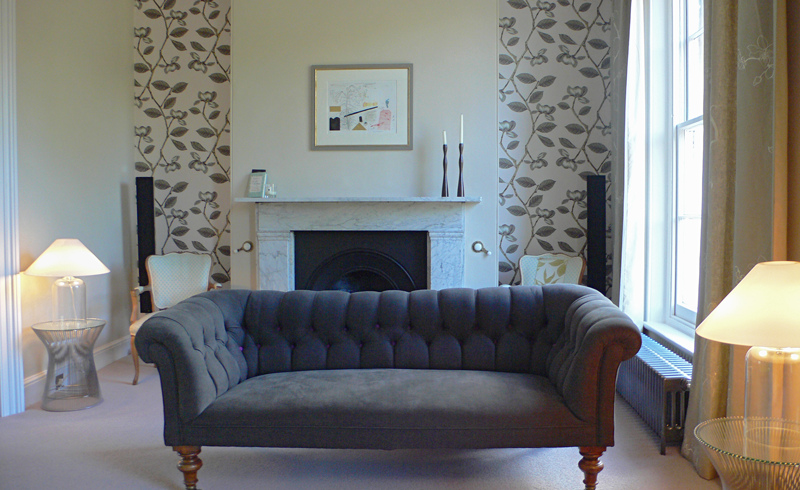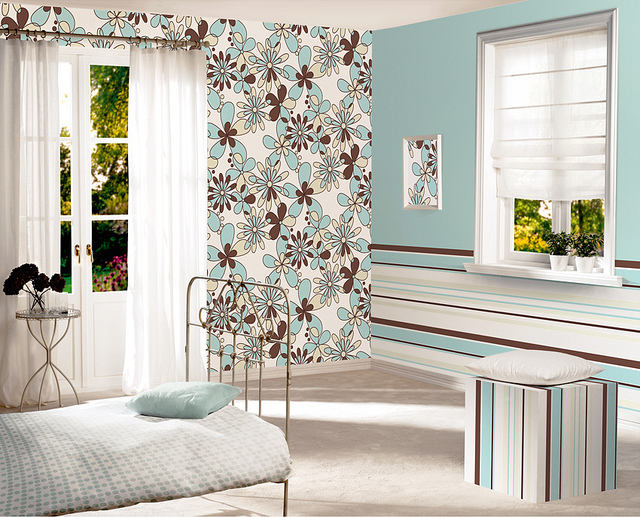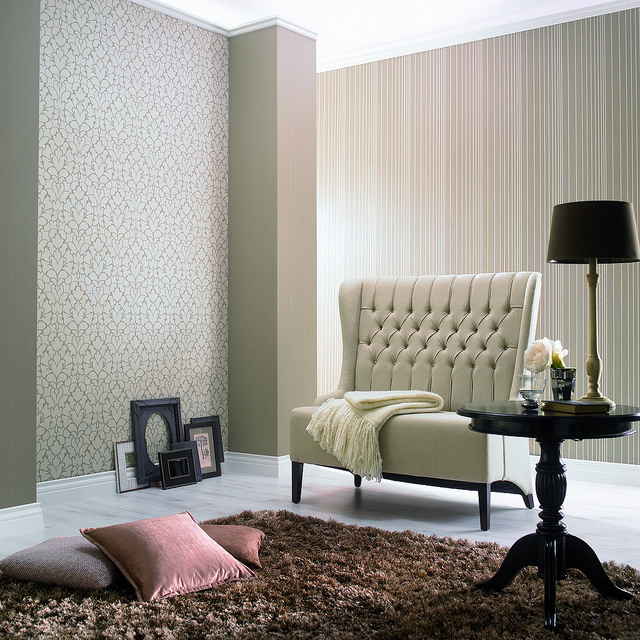Ugly and outdated. Those are the words many people would use to describe wallpaper. The floral, striped and velvet wallpaper designs popular in the 1960s and ‘70s have long been out of style, as people upgraded to simpler (and cheaper) decorating methods. Fortunately, wallpaper was a thing of the past.

photo credit: flickr/rogueinteriordesigns
Until now.
In the last five years, wallpaper has made a surprising revival in American homes. In fact, U.S. wallpaper sales have shot up more than 30 percent since 2010 and will hit $480 million this year, according to a study performed by market research firm Freedonia Group. But this isn’t the wallpaper of old. New fashion trends and technological advancements have modernized wallpaper designs, allowing them to return as a popular choice for homeowners.
Fashion has been a large contributor to wallpaper’s long-awaited comeback. In recent years, prints have taken over the fashion world and, like most style trends, they have trickled into interior design. In order to make their homes contemporary, more and more people are leaving behind simple colors and moving toward vibrant prints and intricate designs. The best medium for achieving these elaborate designs is wallpaper.

photo credit: flickr/tapetenpics
While fashion is to credit for inspiring the latest design trends and leading homeowners back to wallpaper, the wallpaper revival owes a great deal to modern technology. Advances in digital imaging have made it possible to create complex designs that were once out of the question with traditional screen or block printing. Now, hundreds of colors and textures are available, making it easier for printed patterns to make their way from the fashion runway into homes across the country. Printing technology has advanced so far that designers can replicate certain materials, like snakeskin and quilted fabric, on wallpaper and have it look like the real deal. With modern technology, the possibilities are endless when it comes to wallpaper designs.

photo credit: flickr/starlite8
Technological advancements have also made wallpaper production easier and less expensive, which has allowed companies to experiment with and expand wallpaper offerings. Pre-pasted and paste-free designs are now available, eliminating the difficult application process for which traditional wallpaper was known. Pre-pasted wallpaper requires only water to activate the glue, taking away the messiness of applying paste while also simplifying the process. Paste-free papers are essentially large wall decals with a peel-and-stick application process. Paste-free is a great option for renters or people who move around often because it is easily removable and reusable. Applying and removing wallpaper is no longer a dreaded, agonizing feat. Wallpaper designs are now easy options for any home.

photo credit: flickr/tapetenpics
With more design options available and improved application methods, wallpaper may be here to stay for good this time. The ugly and outdated trend seems to have found a way to be stylish and modern.